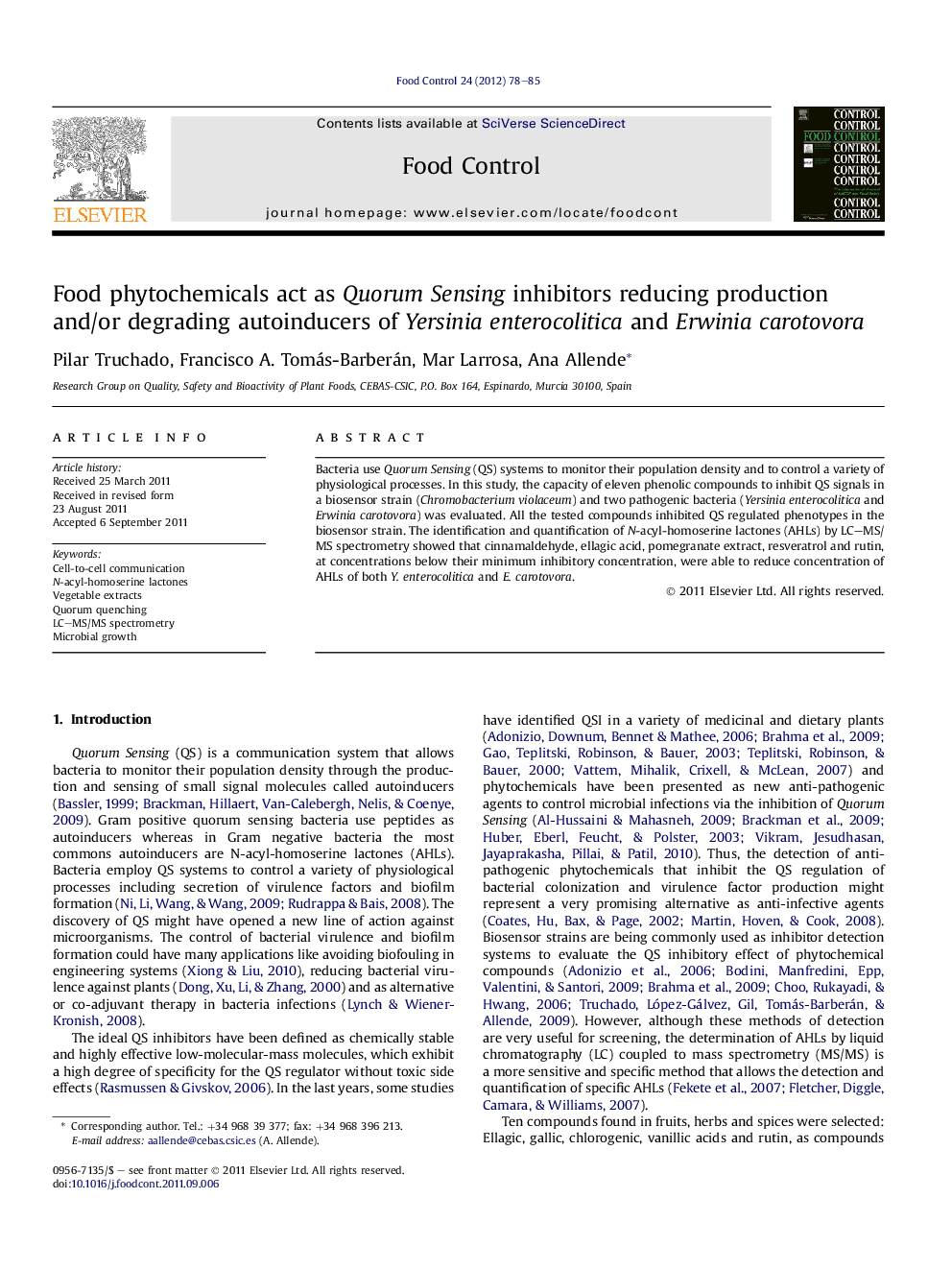| Article ID | Journal | Published Year | Pages | File Type |
|---|---|---|---|---|
| 6394441 | Food Control | 2012 | 8 Pages |
Bacteria use Quorum Sensing (QS) systems to monitor their population density and to control a variety of physiological processes. In this study, the capacity of eleven phenolic compounds to inhibit QS signals in a biosensor strain (Chromobacterium violaceum) and two pathogenic bacteria (Yersinia enterocolitica and Erwinia carotovora) was evaluated. All the tested compounds inhibited QS regulated phenotypes in the biosensor strain. The identification and quantification of N-acyl-homoserine lactones (AHLs) by LC-MS/MS spectrometry showed that cinnamaldehyde, ellagic acid, pomegranate extract, resveratrol and rutin, at concentrations below their minimum inhibitory concentration, were able to reduce concentration of AHLs of both Y. enterocolitica and E. carotovora.
⺠The anti-Quorum Sensing capacity of phenolic compounds found in fruits and vegetables was tested. ⺠Inhibition of QS signals was carried out in two pathogenic bacteria (Yersinia enterocolitica and Erwinia carotovora). ⺠The use of food phytochemicals as QS inhibitors of Y. enterocolitica and E. carotovora has been proved. ⺠Tested phytochemicals inhibit QS processes, which open a new window to control microbial infections.
